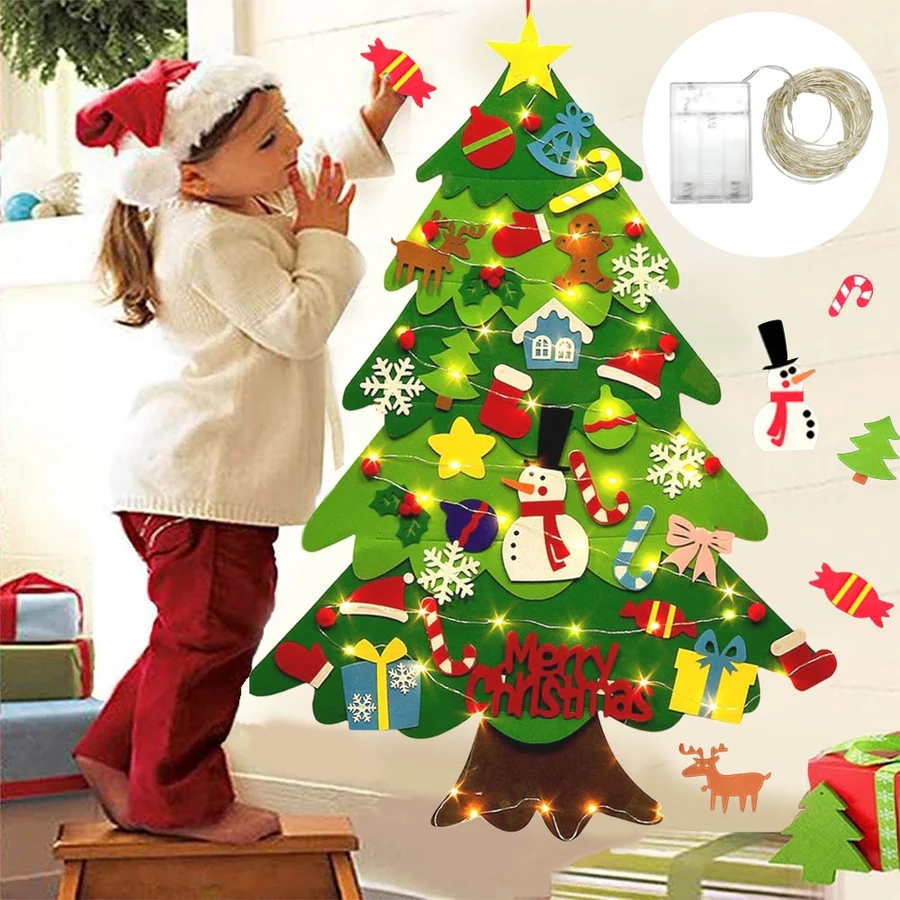
As the holiday season approaches, many families begin to think about how they can create a warm and inviting atmosphere in their homes. One way to do this is by incorporating the principles of Montessori Christmas Tree into your holiday celebrations. A Montessori Christmas tree is not just a decoration; it’s an opportunity for children to engage with their environment, develop practical life skills, and create meaningful memories.
In this blog, we will explore the essence of a Montessori Christmas tree, its significance, and how you can create your own unique version this holiday season.
What is a Montessori Christmas Tree?
A Montessori Christmas tree is designed to be child-centered and hands-on, allowing children to participate in the decoration and care of the tree. Unlike traditional trees adorned with fragile ornaments and dazzling lights, a Montessori tree often features natural materials, simple decorations, and elements that engage the senses. The focus is on fostering independence, creativity, and connection to nature, all fundamental principles of the Montessori method.
Key Elements of a Montessori Christmas Tree
- Natural Materials:
- Choose a tree made from real wood, or opt for a small potted tree that can be planted afterward.
- Use decorations made from natural materials such as wooden ornaments, dried fruits, or cloth garlands.
- Child-Friendly Decor:
- Select decorations that children can easily handle and place on the tree.
- Consider making homemade ornaments together as a family, using simple materials like paper, felt, or biodegradable items.
- Sensory Engagement:
- Incorporate elements that engage the senses, such as cinnamon sticks, pinecones, and seasonal scents.
- Hang up decorations that make sounds, like bells, to create a festive auditory experience.
- Educational Opportunities:
- Use the tree as a teaching tool to explore topics like geography (where different ornaments come from), cultural traditions, and environmental science.
- Encourage children to learn about the history of Christmas trees and the different customs associated with them around the world.
- Involvement and Responsibility:
- Allow children to take an active role in decorating and maintaining the tree. This can foster a sense of responsibility and pride in their contributions.
- Set up a daily or weekly routine where they can help with watering the tree or adjusting decorations.
How to Create Your Montessori Christmas Tree
Step 1: Choose Your Tree
Select a tree that suits your space. A small potted tree or a wooden tree can be an excellent option, as they are easier for children to interact with. If you have the space, a larger, real tree can also be a great choice.
Step 2: Gather Your Materials
Collect decorations made from natural or recycled materials. You can include:
- Dried oranges and apples for a beautiful, fragrant touch
- Handmade ornaments from paper, felt, or clay
- Natural items like pinecones, branches, and dried flowers
- Child-safe string lights if you want to add a bit of sparkle
Step 3: Create Together
Set aside time for the family to decorate the tree together. This can become a cherished family tradition. Allow children to express their creativity, giving them freedom to hang decorations wherever they like.
Step 4: Engage with the Tree
Encourage daily interactions with the tree. This could include watering, rearranging ornaments, or discussing the significance of each decoration. You might also consider reading stories related to the holiday season or discussing the different traditions your family observes.
Step 5: Reflect and Celebrate
After the holidays, take time to reflect on the experiences and memories created around the tree. You can ask children what they enjoyed most or what they learned. This reflection helps cement the lessons learned during this joyful season.
The Importance of a Montessori Christmas Tree
The value of a Montessori Christmas tree lies not just in its aesthetic appeal but in its ability to create a meaningful holiday experience. By incorporating hands-on activities, natural materials, and child-friendly practices, families can foster a deeper connection to both the holiday spirit and the environment.
This approach not only enriches family traditions but also encourages children to develop skills that will serve them well into the future. They learn about responsibility, creativity, and the importance of nature, all while enjoying the beauty and magic of the holiday season.
Conclusion
As you prepare for the holiday season, consider embracing the Montessori philosophy in your celebrations. A Montessori Christmas tree is a wonderful way to create a warm, inviting atmosphere that encourages learning, creativity, and connection. By involving children in the process, you’ll not only create lasting memories but also instill values that will resonate throughout their lives.






